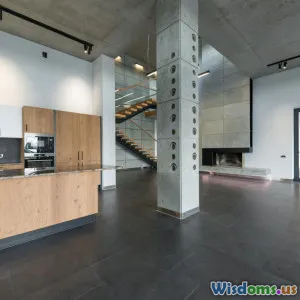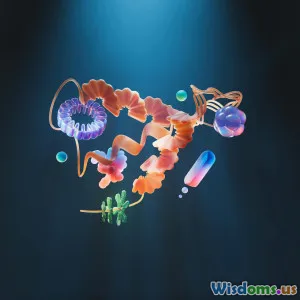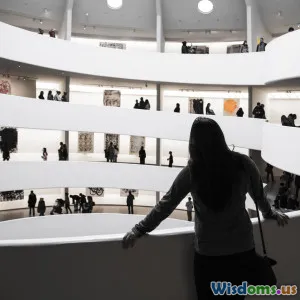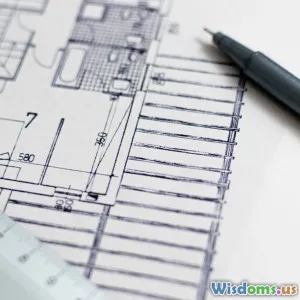
Seven Smart Materials Revolutionizing Contemporary Architecture
8 min read Explore seven innovative smart materials transforming architecture with sustainability, adaptivity, and futuristic design. (0 Reviews)
Seven Smart Materials Revolutionizing Contemporary Architecture
Introduction
Architecture has long been a marriage of art and science, continuously evolving as new materials and technologies emerge. Today, smart materials stand at the forefront of this evolution, fundamentally transforming how architects design and how buildings perform. Imagine walls that self-repair after cracking, facades that change opacity with sunlight, or insulation that adapts dynamically to temperature shifts. This isn’t mere science fiction but the present landscape of contemporary architecture.
The seven smart materials highlighted here are driving a revolution, marrying functionality with sustainability and inspired aesthetics. Their integration promises to create structures that are more resilient, energy-efficient, and interactive with their environments. In this article, we'll dive deep into these groundbreaking materials, explore their real-world applications, and uncover the impact they hold for the future of urban design.
1. Self-Healing Concrete
Concrete, a cornerstone of modern architecture, has traditionally suffered from cracks leading to structural integrity issues and costly maintenance. Self-healing concrete overcomes this limitation through innovative chemistry, involving microcapsules or bacteria embedded into the concrete that activate to seal cracks automatically.
How It Works
Certain formulations contain bacteria spores that, when exposed to water penetrating cracks, activate and produce calcium carbonate, a natural cement-like substance, sealing the fissures. Other variations employ microcapsules filled with healing agents that rupture upon cracking and flow into the cracks, hardening to restore the material.
Real-World Impact
A remarkable example is the Singapore Sports Hub, which utilized self-healing concrete to extend lifecycle durability amid tropical weather conditions. This innovation can reduce repair expenses by up to 30% and improve sustainability by lowering the frequency of renovations. As civil engineer Dr. Amber Schultz notes, "Self-healing concrete offers a paradigm shift from reactive maintenance to proactive resilience in urban infrastructure."
2. Thermochromic Glass
Thermochromic glass responds to temperature changes by altering its tint or opacity, providing dynamic control of light and heat entering a building.
Principle and Advantages
This glass contains molecules or coatings that adjust when heated by sunlight, reducing solar gain and glare during peak hours and reverting to transparency as temperatures drop. This smart glazing drastically cuts down the need for energy-intensive air conditioning and artificial lighting.
Applications
The iconic Al Bahar Towers in Abu Dhabi deploy this technology extensively through a responsive facade featuring geometric shading panels with thermochromic properties. This adapts in real-time to external temperatures, lowering cooling loads by approximately 50%, a significant energy saving in desert environments.
3. Phase Change Materials (PCMs)
Phase change materials offer revolutionary thermal management by absorbing or releasing heat as they transition between solid and liquid phases.
Thermal Regulation
PCMs embedded within walls, ceiling panels, or floors can stabilize indoor temperatures by storing excess heat during the day and releasing it at night, reducing temperature fluctuations and dependence on HVAC systems.
Case Studies
At the University of Florida’s Architecture Building, PCMs have been integrated into insulation boards, resulting in monthly energy savings of nearly 20%. This material’s passive thermal regulation supports green building certifications like LEED and WELL.
4. Electrochromic Windows
Unlike thermochromic glass, electrochromic windows change their opacity in response to an electrical current. Controlled manually or automatically, they offer immense adaptability for occupant comfort and energy conservation.
Benefits
By modulating daylight and solar heat gain, electrochromic windows enhance visual comfort and reduce glare, while cutting cooling loads by up to 25%. Buildings equipped with these windows often experience improved indoor environmental quality.
Notable Usage
Apple’s headquarters, Apple Park, features electrochromic glass extensively, emphasizing transparency and sustainability. This technology aligns perfectly with Apple’s commitment to net-zero energy usage.
5. Piezoelectric Materials
Piezoelectric materials generate electrical charge from mechanical stress, integrating an exciting opportunity to harvest ambient energy.
Architectural Integration
Incorporated into flooring systems or facade components, piezoelectric elements can convert pedestrian footsteps, vibrations, or wind into electricity, powering lighting or sensors.
Real-World Examples
The NewYork-Presbyterian hospital installed piezoelectric floors in high-traffic areas, capturing energy to illuminate nearby lights. This demonstrates a symbiotic relationship between occupant activity and building operations with potential scalability.
6. Shape Memory Alloys (SMAs)
Shape memory alloys exhibit the ability to return to a preset shape after deformation through heat or electrical stimulus, offering adaptive structural capabilities.
Architectural Applications
SMAs can act as actuators for dynamic sun-shading systems or flexible structural components capable of absorbing seismic energy.
Insight
In Japan, the Shibuya Scramble Square building uses SMA dampers for earthquake resistance. Professor Hiroshi Tanaka emphasizes that "SMAs introduce resilience by enabling structures to physically adapt and recover, minimizing damage in natural disasters."
7. Photovoltaic Glass
Photovoltaic (PV) glass integrates solar cells into transparent or semi-transparent panels, converting surfaces like windows and facades into energy generators without compromising aesthetics.
Impact on Sustainability
This material supports energy-positive buildings by generating renewable energy onsite, significantly reducing carbon footprints.
Pioneering Example
The Crystal in London embeds PV glass to cover 70% of its facade, producing enough power for lighting and minor HVAC equipment. This serves as a benchmark for sustainable urban landmarks.
Conclusion
The integration of these seven smart materials heralds a new era where architecture transcends passive structures to become responsive, sustainable, and resilient environments. They confer the ability to self-repair, adapt to climatic and user demands, harvest energy, and enhance occupant well-being.
Architects and urban designers embracing these innovations not only craft extraordinary spaces but also contribute meaningfully to addressing urban challenges like climate change and resource efficiency. As these materials evolve, so will the creativity and responsibility with which we build our cities.
Embracing smart materials isn't just technical progression—it's a cultural and ecological imperative for the future of architecture.
References:
- Van Tittelboom, K., & De Belie, N. (2013). Self-healing in cementitious materials—a review. Materials, 6(6), 2182-2217.
- Al Bahar Towers Official Website. (2020).
- Environmental Protection Agency: Benefits of Phase Change Materials (2022).
- Apple Environmental Progress Report (2023).
- Tanaka, H. et al. (2018). Applications of Shape Memory Alloys in Structures.
- The Crystal, London Case Study (2019).
Rate the Post
User Reviews
Popular Posts





















